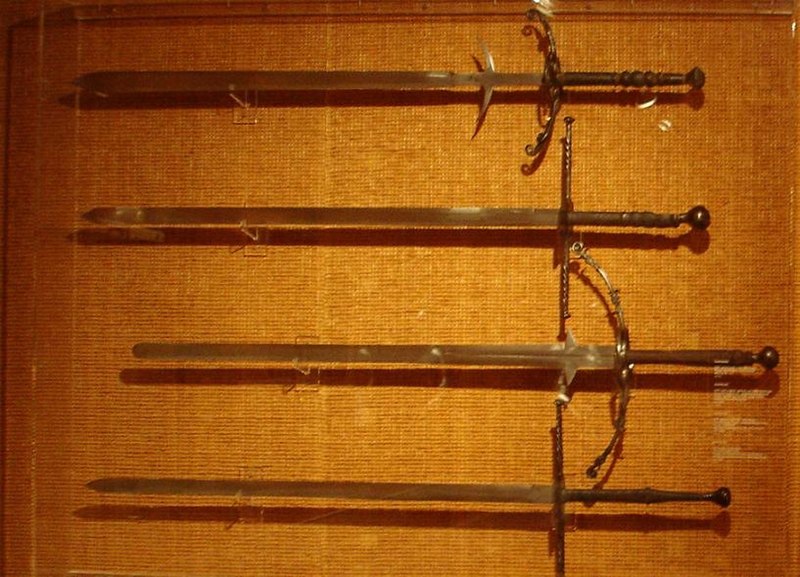- Joined
- Jun 7, 2002
- Messages
- 3,409
bigger than the english long sword, the zweihander was an unsheathed battle sword, meant to be carried shoulder arms. doppelsoldners weilding them were paid twice what regular infantry received (but the qualifiers must be as tough as SEAL training; the things weigh between 4 and 7 pounds.) among the uses for dopplesoldners was to charge at a pike formation, hack down the pikes, and allow the regulars to stream in through the breach.
someone told me museum pieces he has held have some sharpness put into them: a bit like an axe. so i'll believe they were really meant to hew at things in combat. from wiki:


someone told me museum pieces he has held have some sharpness put into them: a bit like an axe. so i'll believe they were really meant to hew at things in combat. from wiki:



